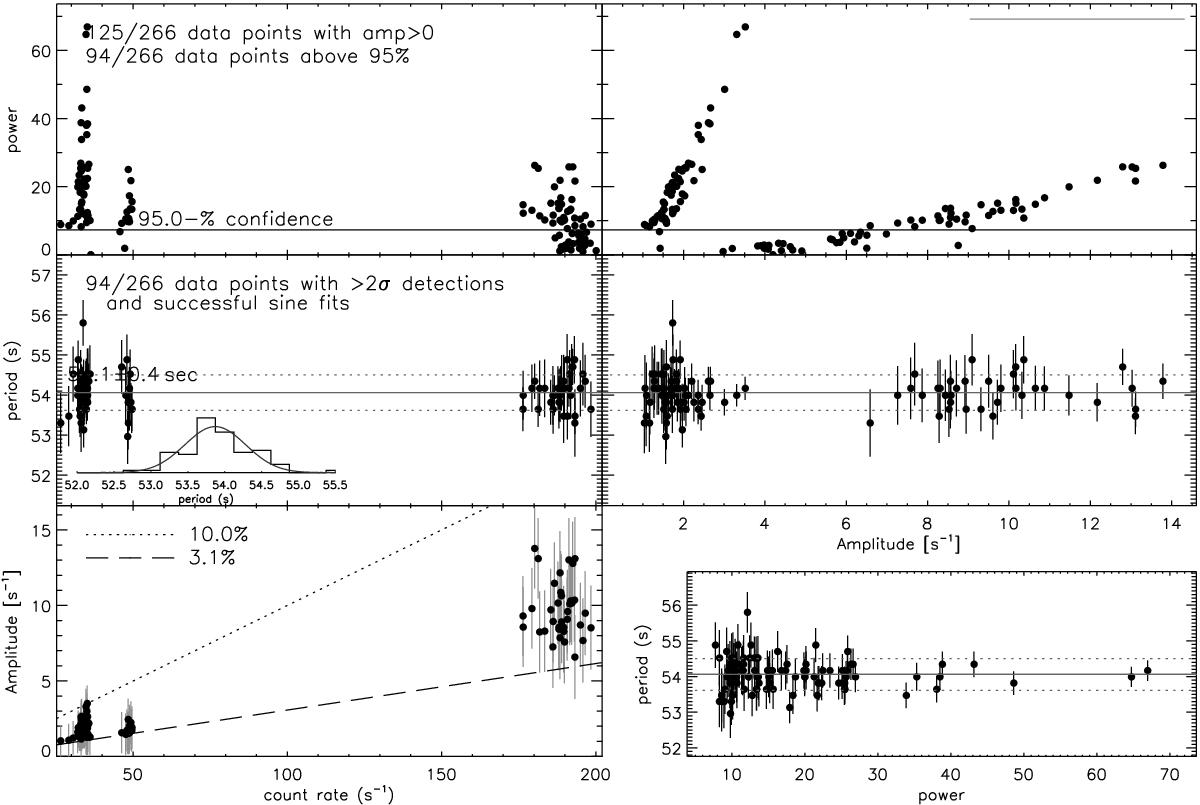Fig. 7

Same as Fig. 3 for the Chandra and XMM-Newton/MOS2 observations of V339 Del. We show 94 out 266 data points in the middle and bottom rows that yield >2σ detections and positive amplitudes. As in RS Oph (Fig. 3), no relation between period properties and count rate is apparent, and the period seems to be variable. The modulation amplitude clearly correlates with the power of the period because modulations with a larger amplitude are easier to detect. The Chandra and XMM-Newton data yield different slopes for amplitudes in unit counts per second, while for count rates, a single slope is encountered. In the bottom left panel, we show that the data from both telescopes yield similar ranges of relative amplitudes. The bottom right panels appear similar to RS Oph (Fig. 3), with largest variations in period occurring with low values of power.
Current usage metrics show cumulative count of Article Views (full-text article views including HTML views, PDF and ePub downloads, according to the available data) and Abstracts Views on Vision4Press platform.
Data correspond to usage on the plateform after 2015. The current usage metrics is available 48-96 hours after online publication and is updated daily on week days.
Initial download of the metrics may take a while.


